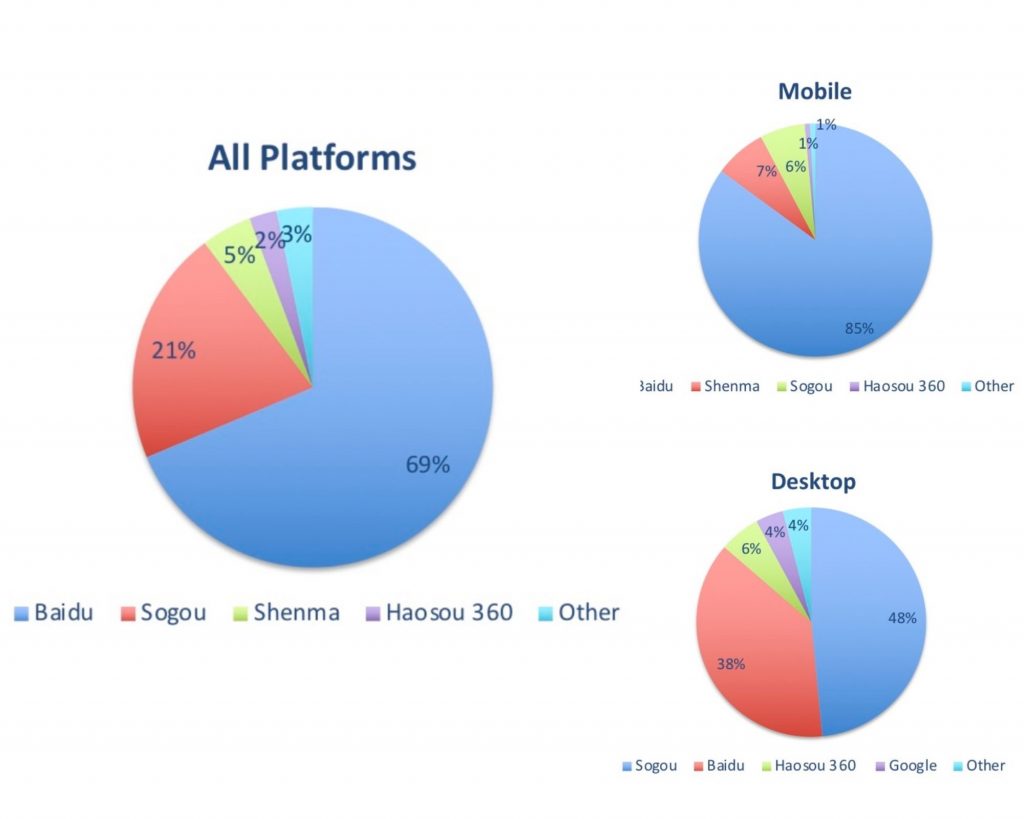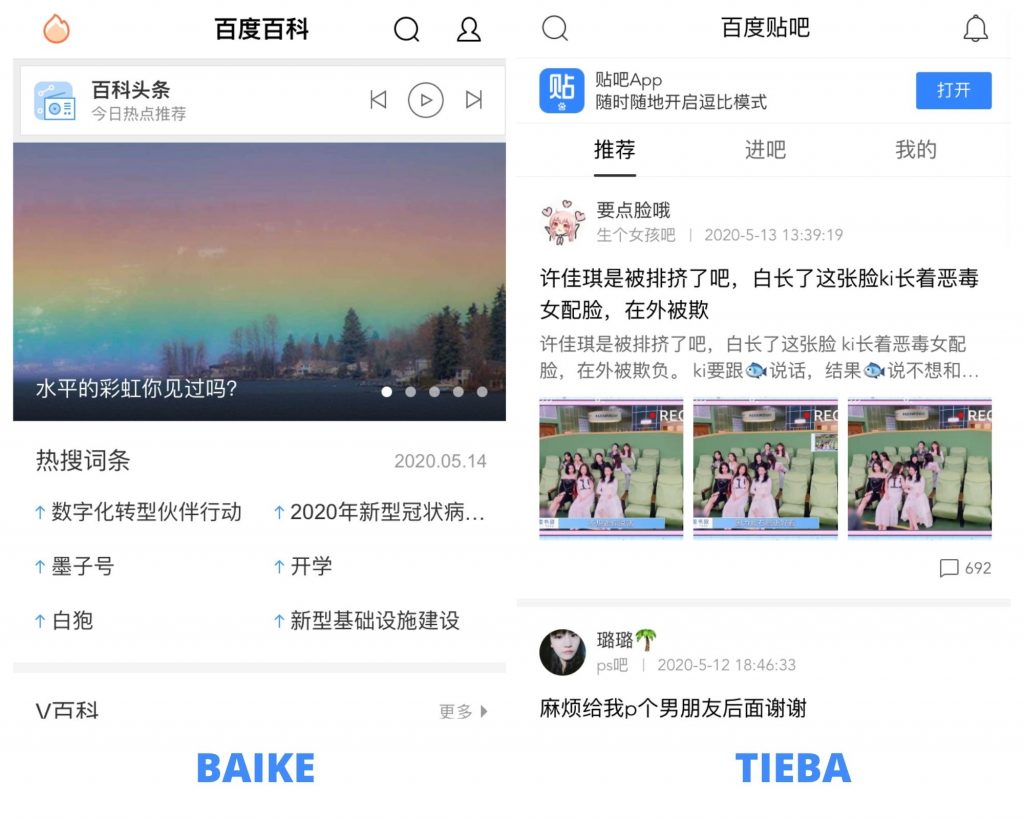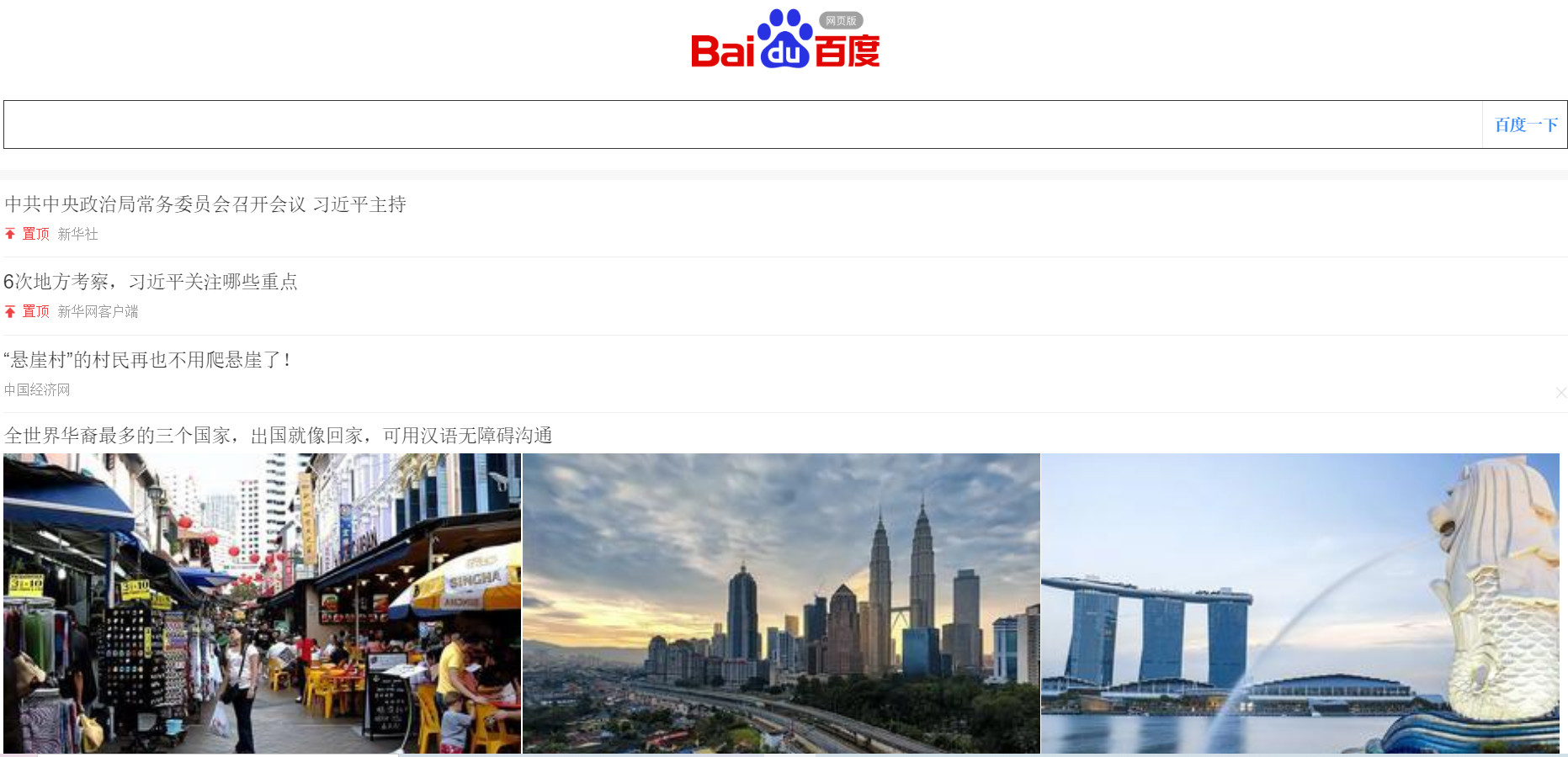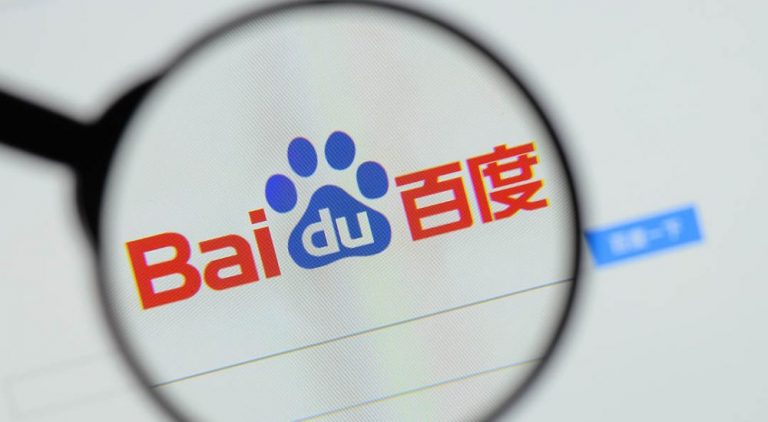Baidu market share in 2020
Baidu is the dominant Chinese internet search engine company, and it is the equivalent to Google in the United States. Baidu is similar to Google and offers similar products and services, but the focus is China where it controls most of the search market.
Baidu offers various services, including a Chinese search engine, as well as a mapping service called Baidu Maps. Baidu offers about 57 search and community services, such as Baidu Baike (an online encyclopedia), Baidu Wangpan (a cloud storage service), and Baidu Tieba (a keyword-based discussion forum).
Need a cost effective TP (Tmall Partner) to sell in China?
We are an Official Tmall Partner e-commerce Agency. Our Services: E-Commerce, Search Engine Optimization, Advertising, Weibo, WeChat, WeChat Store & PR.
By February 2020, Baidu market share dominates the search engine market in China, in terms of all platforms (68.66%) and mobile (85.08%) – Mobile still accounts for the most search engine market share. Sogou search engine surpassed Baidu again, and reached the first position in terms of desktop market share (48.48%).

Baidu App’s daily active users have surpassed 230 million, smart mini programs’ monthly active users have reached 500 million, and average use time has increased 30%. Moreover, Baidu App satisfies 58% of search queries with the first result.
Baidu is definitely the search engine on which to aim to make yourself visible in the Chinese market, but as the internet increasingly dictates the lifestyle of the Chinese, it is essential to be able to reach them through this tool and in the correct way through effective digital marketing strategy.
Baidu want to create more space for content creators
In May 13, 2020 Baidu sets out its mobile strategy and announced a series of measures to support content creators on its mobile platforms.
Baidu announced eight initiatives that will provide subsidies and direct more user traffic to high-quality content creators and developers, in part to incentivize more livestream and short-video content.
Baidu also announced the cross-publishing of content across its wide range of mobile platforms, including the Baidu app, the short Haokan video app and iQIYI, an innovative market-leading online entertainment service provider.

Cross-publishing content is expected to bring more exposure for content creators, increase communication between users and creators, and enhance the interconnectivity of Baidu’s mobile ecosystem.
It was on December 2018 that Baidu invested USD145 million to develop their own Smart Mini-Program Platform embedded in its search app, where external developers could create their own open-source Baidu mini-programs.
Baidu wants to challenge the superiority of WeChat in China by creating a stable of innovative mini-programs that lock in traffic and prevent users from leaving their mobile app. That’s why it also intends to enhance the service capabilities of Baidu’s 420,000 smart mini programs, which currently provide a wide range of services, including government services, shopping, and tourism.
Baidu livestreaming attractiveness
With Baidu’s search and feed engines, Baidu is in a unique position to capitalize on the growing popularity of live streaming, which has become an important means of acquiring knowledge, entertainment and shopping. Search and feed allow Baidu to understand user preferences, so Baidu can provide personalized services to users and connect them with relevant content creators.
For example, since the outbreak of COVID-19, Baidu has promoted live streaming of the Forbidden City to users who have not been able to visit in person. When users view live streaming on Haokan that recommends a specific book, Baidu can direct them to a smart mini-program where they can buy that book.
Baidu App’s daily active users have surpassed 230 million, smart mini programs’ monthly active users have reached 500 million, and average use time has increased 30%. Moreover, Baidu App satisfies 58% of search queries with the first result.
By supporting content creators and encouraging livestreaming, Baidu hopes to build on its successful strategy of using AI to meet users’ diverse and changing content needs and provide a range of mobile-based services.
How to use Baidu to attract Chinese consumers?

First of all, it is necessary to know that the scenario of the digital platforms, the searches for information and products of their interest, as well as the social networks on which they share their experiences are very different from the western ones.
Here are some digital marketing tips on how to take advantage of this tool to help your brand attract Chinese users.
- The site and all the content we want to publish must be in Mandarin Chinese.
Baidu gives greater visibility to sites that are written in Mandarin Chinese, reporting this helps your site receive more traffic.
- Baidu is an integrated part of the communication control system applied by the Chinese government.
If your site contains content that does not comply with the Chinese government’s censorship, or if there are also only links that link to sites that publish unappreciated content, Baidu will immediately block activity on your site.
- Study an efficient Link Building strategy
Baidu gives much more importance to the number of links on your site and the quality of the sites to which they refer. Your presence on the Chinese web and the importance of connections is an important fact to show your relevance in the sector.
- Publish unique and original content
Baidu is very strict when he discovers duplicate or plagiarized content. In China, the presence of plagiarism risks is very common, that’s why there is a strict control.
- Website hosted in China
Local hosting is an important aspect for Seo in China. When trying to optimize your site, the choice is between .cn or .com.cn as they are the only ones considered by Baidu. Even the name is an important aspect, you need to study and to do an analysis before enter in the Chinese market.
- Combine Baidu Sem and Seo
To achieve success in Baidu marketing campaigns, it is very effective to create a strategy that combines SEO and SEM, as both have a very significant weight in the visibility results attributed by the algorithm of the platform.
To appear in Chinese user searches, you need to optimize SEM and SEO specifically for Baidu. Consequently, the rules to follow will be different from those that are applied for Google.
SEO (Search Engine Optimization) and SEM (Search Engine Marketing) techniques are an integral part of any digital marketing strategy. In fact, they allow companies to improve their brand awareness and brand identity on the net.
In a nation where the Internet penetration rate reaches 59%, the power of a good SEO and SEM strategy cannot and should not be underestimated.
For further information to ensure that our site, and not that of your competitors, is present on the front page of Baidu contact GMA.
- Use the Baidu platform in all its forms
Baidu clearly rewards those who use the platform in all its forms, from Baike (Baidu wikipedia), to Baidu Zhidao (Q&A website), to its social network Baidu Tieba (keyword-based discussion forum), Baidu Shopping or Baidu video platforms . Being present and interacting with the platform is an important form of being able to position yourself intelligently.

- Optimize web pages
Google and Baidu are very similar in this respect. Both give a lot of weight to how the web page is structured in terms of title tags, meta description and consistency between the content in the text and the keywords used.
Other important channels to reach Chinese consumers
To enter the Chinese market, however, companies not only need to focus on optimizing their website.
To reach Chinese consumers, other channels must also be managed, such as social media and e-commerce platforms.
Social media
People spend a good portion of their daily lives on social media in China, particularly on WeChat. However, it’s not just about WeChat, which has become one of the most competitive marketing channels in China.
There are many platforms that can be used for social media marketing in China such as Wechat and Weibo.
Others are :
- Toutiao (News & Information & Entertainment Platform)
- DouYin (Short-video App)
- Xiaohongshu (Cross Boarder E-commerce) and others.
Today, WeChat is the largest social media platform in China, with over 1 billion monthly active users. Chinese users spend an average of over 70 minutes a day within the app. All this makes it one of the most popular choices for businesses looking to get started with social media marketing in China.
WeChat allows companies and celebrities to create official accounts to generate content for promotional purposes. Businesses can even implement CRM (Customer Relationship Management) functionality on their WeChat official accounts, allowing businesses to track and manage the contacts on their WeChat Official Account.
In recent years they’ve launched WeChat Advertising, allowing brands to advertise on WeChat with banner ads, KOL advertisements, and Moments ads.
Sina Weibo, or Weibo, is a micro-blogging platform in China released in 2009. Weibo is the second most popular social media in China with its user base nearing 500 million users. Like WeChat, Weibo is another platform brands commonly use for social media marketing in China.
Because Weibo is a blogging site, it acts as a large source of informational and trending content. Companies, organizations, and celebrities in China have Weibo accounts to interact with their customers, fans, and followers. This is one of the most popular platforms for KOLs in China to work on. Since there are no limits on posting like there is on WeChat KOLs on Weibo can do multiple promotions a day, significantly increasing their income.

It also allows brands to communicate with large groups of users through hashtags & paid to advertise and even sell their products directly through the platform.
Chinese eCommerce platforms
China Domestic eCcommerce
China is the first online market in the world. In 2019, 2,000 billion dollars of online purchases were recorded, which confirmed e-commerce as one of the main levers of domestic consumption in the country.
E-commerce in China is quite varied. In fact, there are a myriad of platforms that are used every day by Chinese users to finalize online purchases. Alongside a few big players, such as Tmall which holds 61.4% of queries and JD.com 24%, there are a number of niche minority platforms, but equally important.
Investing only on one platform is very risky and rather limiting. There is a risk of remaining under track with respect to the myriad of brands and brands available on the web. To ensure greater visibility it is advisable to be present on multiple platforms in an integrated way.
China Cross-border eCommerce
Distributing your products on the Chinese market via the web does not necessarily imply the use of domestic platforms. In fact, it is also possible to export in cross-border which means directly from your home market.
Relying on cross-border e-commerce allows you to avoid several bureaucratic procedures otherwise necessary to sell on local marketplaces. These include the opening of a local bank account, the Chinese legal entity, the opening of a warehouse in China and payments in local currency.

The cross-border e-commerce landscape is much more fragmented than the local one: the main players are Koala.com, which holds 26% of the queries, followed by Tmall Global (22%) and JD Worldwide (13%) and by dozens of minority platforms specialized in specific sectors.
Cross-border shopping is proving popular in China. It is considered very reliable and capable of guaranteeing higher quality levels. The downside, however, is that shipments are significantly longer than local ones and the Chinese are used to receiving the purchased goods within a maximum of 24 hours.








